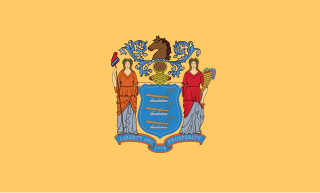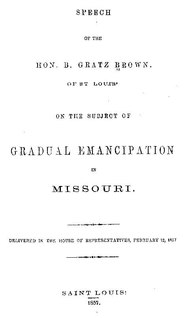
The Atlantic slave trade, transatlantic slave trade, or Euro-American slave trade involved the transportation by slave traders of various enslaved African people, mainly to the Americas. The slave trade regularly used the triangular trade route and its Middle Passage, and existed from the 16th to the 19th centuries. The majority of those who were enslaved and transported in the transatlantic slave trade were people from Central and West Africa that had been sold by other West Africans to Western European slave traders, while others had been captured directly by the slave traders in coastal raids; Europeans gathered and imprisoned the enslaved at forts on the African coast and then brought them to the Americas. Except for the Portuguese, European slave traders generally did not participate in the raids because life expectancy for Europeans in sub-Saharan Africa was less than one year during the period of the slave trade. The South Atlantic and Caribbean economies were particularly dependent on labour for the production of sugarcane and other commodities. This was viewed as crucial by those Western European states which, in the late 17th and 18th centuries, were vying with one another to create overseas empires.

Mariaville is a town in Hancock County, Maine, United States. The population was 513 at the 2010 census.

Slavery in the colonial history of the United States, from 1526 to 1776, developed from complex factors, and researchers have proposed several theories to explain the development of the institution of slavery and of the slave trade. Slavery strongly correlated with the European colonies' demand for labor, especially for the labor-intensive plantation economies of the sugar colonies in the Caribbean and South America, operated by Great Britain, France, Spain, Portugal and the Dutch Republic.

Slavery in the United States was the legal institution of human chattel slavery, comprising the enslavement primarily of Africans and African Americans, that existed in the United States of America from its founding in 1776 until the passage of the Thirteenth Amendment in 1865. Slavery was established throughout European colonization in the Americas. From early colonial days, it was practiced in Britain's colonies, including the Thirteen Colonies which formed the United States. Under the law, an enslaved person was treated as property and could be bought, sold, or given away. Slavery lasted in about half of U.S. states until 1865. As an economic system, slavery was largely replaced by sharecropping and convict leasing.

The Fugitive Slave Act or Fugitive Slave Law was passed by the United States Congress on September 18, 1850, as part of the Compromise of 1850 between Southern interests in slavery and Northern Free-Soilers.

Triangular trade or triangle trade is trade between three ports or regions. Triangular trade usually evolves when a region has export commodities that are not required in the region from which its major imports come. It thus provides a method for rectifying trade imbalances between the above regions.

In the United States before 1865, a slave state was a state in which slavery and the slave trade were legal, while a free state was one in which they were not. Between 1812 and 1850, it was considered by the slave states to be politically imperative that the number of free states not exceed the number of slave states, so new states were admitted in slave–free pairs. There were, nonetheless, some slaves in most free states up to the 1840 census, and the Fugitive Slave Act of 1850 specifically stated that a slave did not become free by entering a free state.

Emancipation Day is observed in many former European colonies in the Caribbean and areas of the United States on various dates to commemorate the emancipation of slaves of African descent.

Slavery in New Jersey began in the early 17th century, when Dutch colonists trafficked African slaves for labor to develop their colony of New Netherland. After England took control of the colony in 1664, its colonists continued the importation of slaves from Africa. They also imported "seasoned" slaves from their colonies in the West Indies and enslaved Native Americans from the Carolinas.

Africatown, also known as AfricaTown USA and Plateau, is a historic community located three miles (5 km) north of downtown Mobile, Alabama. It was formed by a group of 32 West Africans, who in 1860 were included in the last known illegal shipment of slaves to the United States. The Atlantic slave trade had been banned since 1808, but 110 slaves held by the Kingdom of Dahomey were smuggled into Mobile on the Clotilda, which was burned and scuttled to try to conceal its illicit cargo. More than 30 of these people, believed to be ethnic Yoruba, Ewe, and Fon, founded and created their own community in what became Africatown. They retained their West African customs and language into the 1950s, while their children and some elders also learned English. Cudjo Kazoola Lewis, a founder of Africatown, lived until 1935 and was long thought to be the last survivor of the slaves from the Clotilda.

Slavery among Native Americans in the United States includes slavery by and slavery of Native Americans roughly within what is currently the United States of America.

An Act for the Gradual Abolition of Slavery, passed by the Fifth Pennsylvania General Assembly on 1 March 1780, prescribed an end for slavery in Pennsylvania. It was the first act abolishing slavery in the course of human history to be adopted by a democracy. The Act prohibited further importation of slaves into the state, required Pennsylvania slaveholders to annually register their slaves, and established that all children born in Pennsylvania were free persons regardless of the condition or race of their parents. Those enslaved in Pennsylvania before the 1780 law came into effect remained enslaved for life. Pennsylvania's "gradual abolition"—rather than Massachusetts's 1783 "instant abolition"—became a model for freeing slaves in other Northern states.
Sylvester Magee purported to be the last living former American slave. He received much publicity and was accepted for treatment by the Mississippi Veterans Hospital as a veteran of the American Civil War. If this claim were true, Magee would not only have been the last surviving American Civil War veteran, but the oldest person to have ever lived.

Redoshi was a Beninese woman taken to the U.S. state of Alabama as a girl in 1860. Until a later surviving claimant, Matilda McCrear, was announced in 2020, she was considered to have been the last surviving victim of the transatlantic slave trade. Taken captive in warfare at age 12 from the Slave Coast of West Africa, she was sold to Americans and transported by ship to the United States, in violation of U.S. law. She was sold again and enslaved on the upcountry plantation of the Washington Smith family in Dallas County, Alabama, where her owner renamed her Sally Smith.
Matilda McCrear was a Yoruba-American woman who was the last known living survivor in the United States of the transatlantic slave trade and the ship Clotilda. She was captured and brought to Mobile, Mobile County, Alabama, at the age of two with her mother and older sister.

Gradual emancipation was a legal mechanism used by some states to abolish slavery over a period of time, such as An Act for the Gradual Abolition of Slavery of 1780 in Pennsylvania.

The Negro Farmer: Extension Work for Better Farming and Better Living is a 1938 educational film made by the United States Department of Agriculture with assistance from the Tuskegee Institute. It features music, entitled "Negro Melodies", from the Tuskegee Institute Choir directed by African American composer William L. Dawson (composer). Through commentary from a white male narrator using racial innuendo inferring African American inferiority in farming practices, the film is a condescending, "paternalistic portrait of black rural life", intended to "halt a mass migration to the urban north by black people".

The United States of America historically allowed the enslavement of human beings, most of them Africans and African Americans who were transported from Africa during the Atlantic slave trade and whose freedom was taken as a result. The institution of slavery began in the United States in the 16th century under British colonization of the Americas, and was ended with the passage of the Thirteenth Amendment in 1865.
Captain Tomba was an African ruler who was sold into slavery during the 18th century.



















